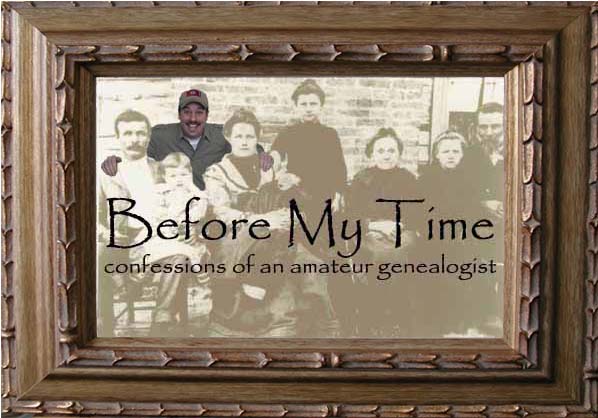.JPG) Going to an old graveyard for research is as close as a genealogist can get to feeling like Indiana Jones. I eat it up and, fortunately for me, my family loves being buried in old cemeteries. I’ve had to search for old abandoned cemeteries deep in the woods and brush dirt off headstones and I love it every time!
Going to an old graveyard for research is as close as a genealogist can get to feeling like Indiana Jones. I eat it up and, fortunately for me, my family loves being buried in old cemeteries. I’ve had to search for old abandoned cemeteries deep in the woods and brush dirt off headstones and I love it every time!I consider information gathered in cemeteries relatively (no pun intended) reliable. If I have two different birthdates for an individual from different sources, I’ll always go with the date on the headstone. My reasoning is that it’s quite literally written in stone. Short of a birth certificate or a time machine, it’s the best you can do. I’m not saying that cemeteries aren’t infallible. Sometimes a genealogist simply has to make a decision on what information to take as fact.
To save a lot of time, I try to locate graves beforehand by asking family members and searching the web. There are several sites I like to use such as Find A Grave and Rootsweb. These records may not always be complete or up to date so be prepared to explore cemeteries you visit for other members of your family tree.
When I go to a cemetery, I bring along 2 things; a camera and pen & paper (okay, that’s actually
 3 things). I’m also usually accompanied by my trusty research assistant – my wife. I keep a “Genealogy Notebook” that’s my field research companion for notes. I’ll take pictures of headstones and transcribe them in my notebook in case the pictures don’t turn out legible. I might also note graves’ locations in the cemetery. I’ve also had to note the location of cemeteries themselves that are forgotten in the woods or deep on private property. I might do this on a road atlas as well as my notes.
3 things). I’m also usually accompanied by my trusty research assistant – my wife. I keep a “Genealogy Notebook” that’s my field research companion for notes. I’ll take pictures of headstones and transcribe them in my notebook in case the pictures don’t turn out legible. I might also note graves’ locations in the cemetery. I’ve also had to note the location of cemeteries themselves that are forgotten in the woods or deep on private property. I might do this on a road atlas as well as my notes.Photographing or even just reading a headstone can sometime prove a difficult task. There’s a debate about if “rubbings” hurt headstones. I’ve never tried it, large tombstone-sized paper being hard to come by. Some suggest using flour, cocoa or fuller’s
 earth to sprinkle on hard-to-read headstones, brushing the excess off to reveal the inscription. These may work to make headstones legible in photographs, but to just read them (and sometimes to make them more photographable) I prefer something more practical - dirt. Dirt is radically cheaper and is usually readily available (not to mention quite plentiful) in a cemetery. I won’t pull up grass or disturb a grave. I’ll either look for some nearby or bring some with me in a jar. This is when a genealogist can really get their hands dirty!
earth to sprinkle on hard-to-read headstones, brushing the excess off to reveal the inscription. These may work to make headstones legible in photographs, but to just read them (and sometimes to make them more photographable) I prefer something more practical - dirt. Dirt is radically cheaper and is usually readily available (not to mention quite plentiful) in a cemetery. I won’t pull up grass or disturb a grave. I’ll either look for some nearby or bring some with me in a jar. This is when a genealogist can really get their hands dirty!I’ve seen “Gone but not forgotten” on many-a-headstone. I find it sad because direct descendants have forgotten them. I take great pride in often being the first person in decades to visit the grave of a great-grandparent, uncle, aunt or cousin.
So get out into world and literally visit your ancestors. To quote Indiana Jones “[sometimes] you’ve gotta get out of the library!”


No comments:
Post a Comment